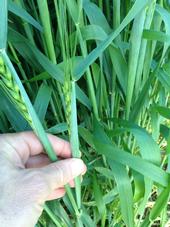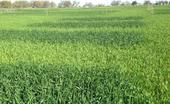- Author: Mark E Lundy

We're off to a good start to the rainfall year! As farmers begin to turn attention to fall-planted small grains, be sure to check out UC's extension resources on the UC Small Grains Research and Information Center and the associated UC Small Grains Blog. Resources include the following:
The California Weather Web-Tool provides site-specific precipitation and temperature data for customizable date ranges and includes 10-year averages and a 10-day forecast. Read...
- Author: Sarah Light
We hope you can join us for our field day! Agenda and directions are below. Contact Sarah Light with questions: selight@ucanr.edu ~ 530-822-7515.
Wheat Field Day
Colusa County, CA
Tuesday March 12th, 2019 ~ 8:30-11:00am
8:30 am Registration
9:00...
- Author: Mark Lundy

After a relatively dry start to the rainfall season from October through early November, rainfall in California since November has been above average. About halfway through the rainy season, year-to-date precipitation totals are approximately 20-30% greater than the 10-year average in the small grain growing regions of California (Figure 1).
Growing degree days (GDD: 86F max; 45F min) for common wheat and other small grains have been accumulating more rapidly than the 10-year average since the middle of November (Figure 2), which has been primarily a function of warmer than average night-time temperatures (Figure 3).
The UC Small Grain Testing Program established small grain variety...
- Author: Mark Lundy
- Author: Steve Orloff
- Author: Nicholas Clark
- Contributor: Robert B Hutmacher
- View More...

We have received several recent inquiries following on our blog post from late January that discussed the potential value of a nitrogen (N) topdress at the tillering-to-jointing stages of wheat growth. This is particularly an issue with the higher than average precipitation we have experienced in California this year. The current question is whether a topdress of N might still be beneficial to wheat crops that are in the late-boot to early-heading stages of growth. Although fall-planted wheat...
- Author: Mark Lundy
- Author: Steve Orloff
- Contributor: Steven D Wright
- Contributor: Robert B Hutmacher
- View More...

Over the past 4+ seasons, a UCCE team (Lundy, Orloff, Wright and Hutmacher) has revisited nitrogen (N) fertilization recommendations for hard spring wheat specific to California conditions. We have grown wheat under a wide range of conditions and soil types, while varying the timing and quantity of N fertilizer to create conditions of N deficiency and sufficiency at the various times in the season when a grower might consider a N topdress.
Image 1. Hard spring wheat (UC Patwin 515) grown in the 2014-15 season in Davis where N fertilizer (urea) was/was not broadcast-applied near the beginning of...



